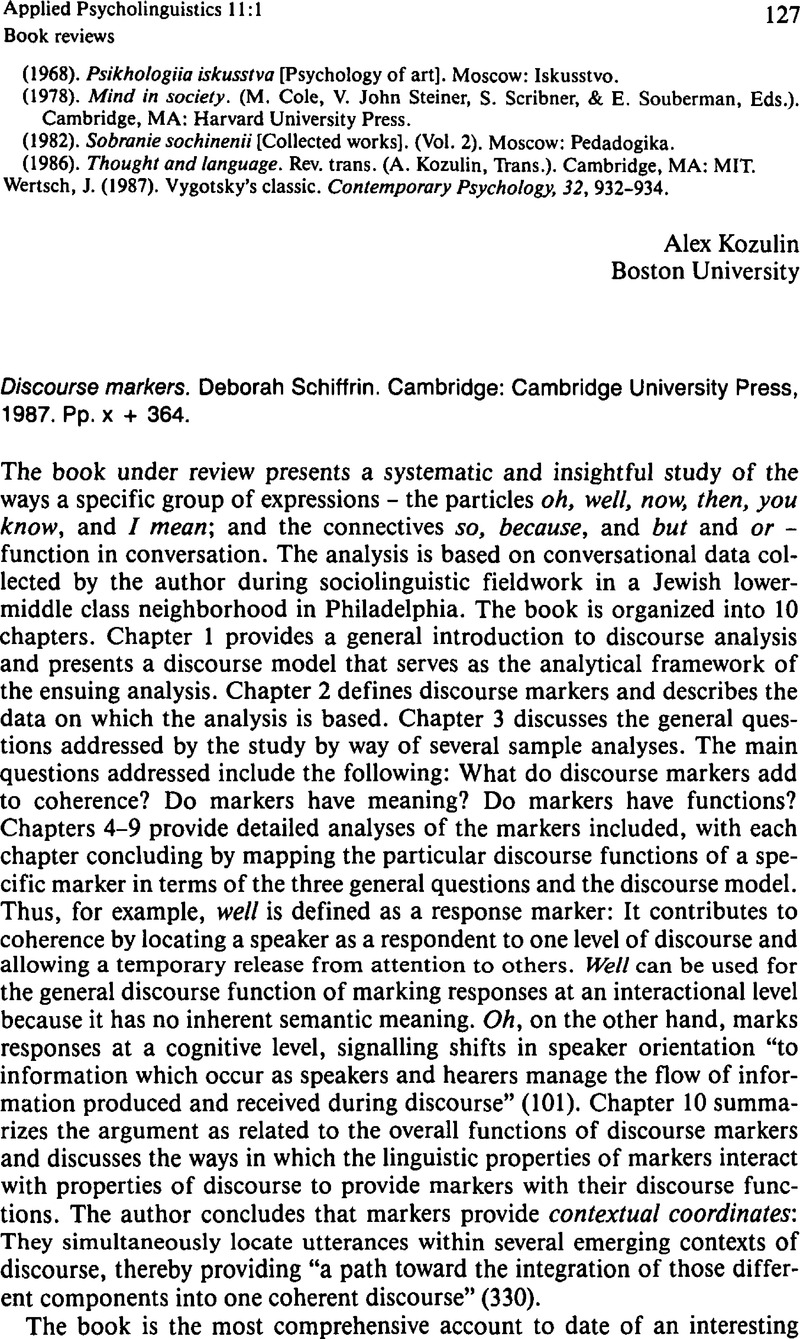No CrossRef data available.
Article contents
Discourse markers. Deborah Schiffrin. Cambridge: Cambridge University Press, 1987. Pp. x + 364.
Published online by Cambridge University Press: 28 November 2008
Abstract
An abstract is not available for this content so a preview has been provided. Please use the Get access link above for information on how to access this content.

- Type
- Book Reviews
- Information
- Copyright
- Copyright © Cambridge University Press 1990
References
REFERENCES
Blum-Kulka, Shoshana. (1985). The multifunctionality of discourse markers: The case of requests. Theoretical Linguistics, 12, 213–229.Google Scholar
Blum-Kulka, Shoshana, & Levenston, Eddie. (1987). Lexical-grammatical pragmatic indicators. Studies in Second Language Acquisition, 9, 155–170.Google Scholar
Edmondson, Willis, & House, Juliane. (1981). Let's talk and talk about it: A pedagogical interactional grammar of English. München: Urban and Schwarzenberg.Google Scholar
Fraser, Bruce. (1987). Pragmatic formatives. In Verschueren, J. & Bertuccelli-Papi, M. (Eds.), The pragmatic perspective (pp. 179–194). Amsterdam: John Benjamins.Google Scholar
House, Juliane, & Kasper, Gabriele. (1981). Politeness markers in English and German. In Coulmas, Florian (Ed.), Conversational routine (pp. 157–185). The Hague: Mouton.Google Scholar
Katriel, Tamar, & Dascal, Marcelo. (1984). What do indicating devices indicate? Philosophy and Rhetoric, 77(1), 1–15.Google Scholar
Searle, John, & Vanderveken, Daniel. (1985). Foundations of illocutionary logic. Cambridge: Cambridge University Press.Google Scholar




